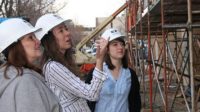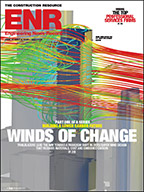In conjunction with the release of LEED v.3, USGBC transferred the certification of LEED professionals and building certification to the Green Building Certification Institute. The process for accrediting professionals has also changed.
Now there are three tiers of LEED professionals; LEED Green Associates, LEED AP+ and LEED AP Fellow. “Prior LEED accreditation was something accessible to people regardless of their role on the design team or their expertise in working with LEED and sustainable design,” explains Andy Hathaway, Director of Sustainability Consulting, Steven Winter Associates, Norwalk, Conn.
“You have over 100,000 LEED accredited professionals right now and a fraction of that number of LEED certified projects,” Hathaway says. “Suffice it to say you have a number of LEED professionals that have not worked on a LEED building.”
Now to become a LEED AP you must have experience working on a LEED project within the last three years. “I think this is a good thing,” Hathaway says. “It is an added value to owners and developers that write an RFP that requires a LEED professional on a team. The credential means that they are getting someone that actually has experience on a project.”
But while everyone agrees the tougher standards are a good thing, the changes in the rules are causing some confusion. “They changed the rules in a way that was a little bit fuzzy,” says Michael Deane, vice president and chief sustainability officer at New York-based Turner Construction.
“We have invested heavily to get our people trained,” Deane explains. About 18 months ago Turner took LEED AP training in house. To date over 1,100 Turner employees, or about 25 percent of the company, are LEED APs. “Seventy-five percent of our profession staff still needs to and wants to become LEED accredited.”
“The rules have all changed, we are not sure what the new rules are and we are not so sure of the implications,” Deane says. “We know that there is continuing education required to maintain your credentials, which is a good thing, but it has taken the GBCI a long time to determine exactly what would qualify. So we are in a state of limbo. I look forward to those standards being clarified so we can start achieving them.”


